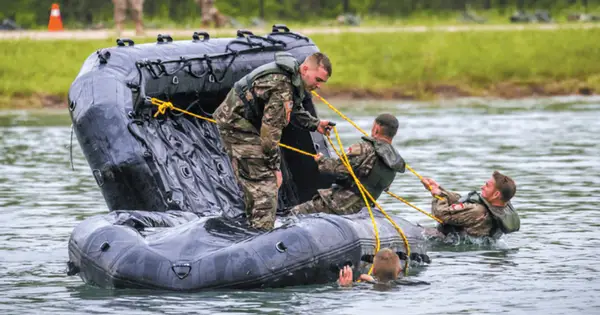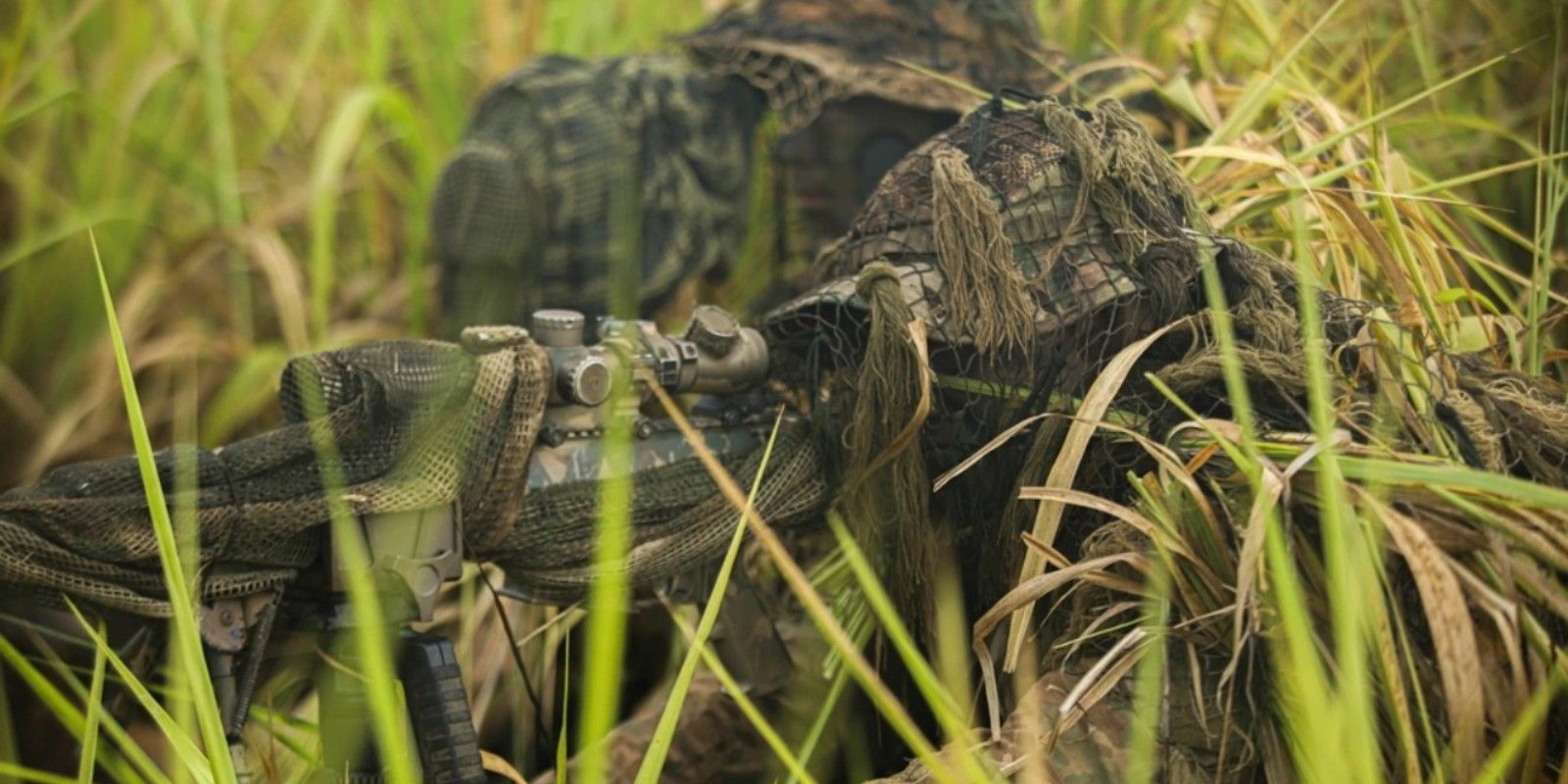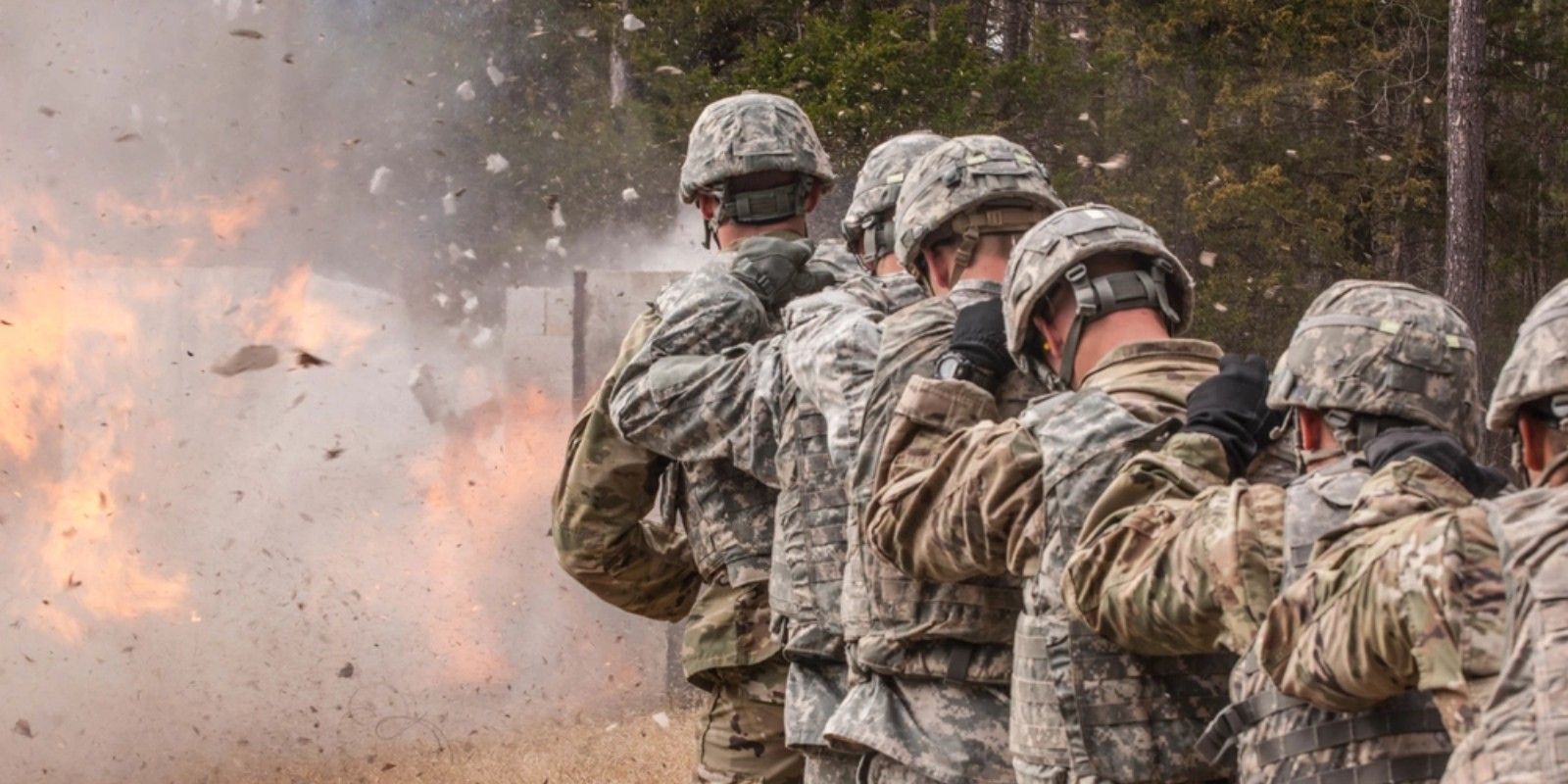U.S. ARMY ENGINEER SCHOOL

The USAES Commandant serves as the commandant of the Engineer School and is responsible for ensuring that the vision for engineer profession and regiment is nested with and consistent with the CG’s and MSCoE.
This individual serves as the engineer branch proponent with primary responsibility for training, leader development, and personnel for the branch and works to integrate those into and across DOTMLPF concerns for the engineer branch.
The commandant focuses on the needs of the Engineer Force while teaming with the other commandants and the DtCG to recommend to the CG changes to doctrine, organizational construct, training and leader development, and materiel solutions. Using military expertise, the commandant is responsible to the CG to exercise internal lead, in concert with the DtCG (in the dual-hatted CDID SES role), for development and integration of the following: EN force structure, CIED defeat the device line of operation (LOO) from the Army CIED training strategy and training standardization, and capabilities development for base camps, geospatial and environmental integration. The USAES commandant may speak and brief on behalf of the CG for the same areas. The school commandant exercises command responsibilities for 1st EN BDE. The general officer in this position serves as principal adviser in all command matters and is authorized to give orders, directions and guidance, which have the same force and effect as those given by the CG.
The USAES provides a progressive program of resident and nonresident training in its quest to provide qualified engineer leaders in an ever-expanding technological Army.
The USAES mission includes teaching engineer officers the tactics, techniques and principles of combat engineering, military engineering, and integration of geospatial and environmental considerations into military operations. USAES activities develop engineer doctrine, individual and collective training products, combined arms training strategies, counter-IED equipment, tactics, techniques and procedures, environmental engineering, engineer support to urban operations, geospatial engineering and their supporting training publications.
While the installation has been a training site for enlisted engineers since its founding in 1941, it was not until 1990 that the United States Army Engineer School moved its officer training from Fort Belvoir to Fort Leonard Wood. In 1995, Navy, Marine and Air Force personnel joined the Army to conduct joint engineer training at Fort Leonard Wood.
As a part of the Maneuver Support Center of Excellence Complex, Lincoln Hall is the headquarters for USAES. Lincoln Hall is the academic building named for Gen. George Lincoln. A Rhodes scholar, Lincoln was promoted to brigadier general at age 38, making him America’s youngest World War II general staff officer. The USAES commandant and the engineer branch staff are in Lincoln Hall, Suite 3617, and can be reached at 573-563-6192.
The USAES consists of the following:
The Directorate of Training and Leader Development develops and integrates engineer and joint engineer training and doctrinal programs, materials and products across the Engineer Regiment and joint engineer community; develops combined arms training strategies (CATS); manages resident and nonresident officer and warrant officer institutional training; and conducts leader training and education. The directorate also coordinates institutional training for deploying active-duty, National Guard and Reserve Engineer forces. Call 573-563-4093 for more information.
The Directorate of Environmental Integration (DEI): As a result of the Dec. 1, 2000, approved Army Environmental Campaign Plan and Operational Directive signed by the undersecretary of the Army and the Army’s vice chief of staff, the USAES was designated the Army (and the branch) proponent for the integration of environmental considerations across doctrine, organization, training, material, leader development, personnel and facilities (DOTMLPF) and within military operations. DEI represents USAES in the day-to-day execution of this mission. In this role, DEI will develop, integrate, evaluate, standardize and synchronize environmental considerations into and across the domains of DOTMLPF.
This will increase awareness and knowledge in Soldiers and civilians to positively affect environmental efficiencies and effectiveness in the conduct of military training and operations. This will ensure sustainable Army training areas and ranges, environmentally considerate leaders and units when operationally deployed, and a program synchronized with the Army’s other four areas of environmental concentration: research, development and acquisition; installation management; operations; and public outreach. Additionally, USAES (DEI) is charged with the collection and dissemination of environmental lessons learned. Call 573-329-1931 for more information.
The Counter Explosive Hazard Center (CEHC) is a component of the U.S. Army Engineer School and was formally established by the Department of Army on Oct. 2, 2005, and serves as the Army’s integrator for all explosive hazard countermeasures. It develops, synchronizes and integrates those countermeasures across the doctrine, organization, training, materiel, leader development, personnel and facilities spectrum to enable mobility in urban and complex terrain. This provides new or emerging capabilities, skills and tools so Soldiers can fight terrorism and institutionalizes new explosive hazard countermeasures to better prepare the Army for future conflicts.
As the primary action agent for Army improvised explosive device defeat proponency, CEHC is the center of excellence in identifying future explosive threats and respective countermeasures. The CEHC is a critical “reach back organization” for the Joint IED Defeat Organization to support asymmetric warfare initiatives and complements the operational and forward-deployed role of the Asymmetric Warfare Group, while maintaining contact with tactical engineer commanders in the fight to better support them.
The deputy assistant commandant Army National Guard and Army Reserve exercises oversight of the total force integration process on behalf of the USAES commandant. For more information, call 573-563-8075.
The Engineer School History Office concentrates on the history of combat engineering since the inception of the Corps in 1775. The Research Collection has approximately 3 million pages of material including reports, studies and organizational documents. The collection also contains more than 30,000 photographs and hundreds of videos and other media. The History Office is charged to support the Engineer School and Regiment with research and analysis, educational support, archival collections and information. For more information, call 573-563-6109/6365.
The U.S. Army Engineer Museum, in Building 1607, houses displays that tell the history of the U.S. Army engineer from 1775 to the present. Exhibit highlights include airborne, amphibious, combat and topographic engineering, as well as bridging, demolitions, land mine warfare and weapons. Adjacent to the Engineer Museum are 13 restored World War II structures, featuring barracks, mess halls, orderly rooms, day rooms and a prisoner-of-war exhibit. Call 573-596-0780 for more information, or visit www.wood.army.mil/usaes/museum.html.
1st Engineer Brigade
The 1st Engineer Brigade trains and develops engineer Soldiers, Sailors, Airmen and Marines for full-spectrum operations to fight and win our nation’s wars. The brigade is composed of four TRADOC battalions: 31st Engineer Battalion, 35th Engineer Battalion, 169th Engineer Battalion and 554th Engineer Battalion, at Fort Leonard Wood. You can reach the 1st Engineer Brigade Headquarters at 573-596-0224, or visit the brigade website at www.wood.army.mil/usaes/1stenbde.html.
The 31st Engineer Battalion trains and develops disciplined combat engineers and bridge crewmembers ready to immediately contribute to their operational units for full-spectrum operations.
The 35th Engineer Battalion transforms volunteers into disciplined Soldiers and trains sappers at Fort Leonard Wood in order to provide commanders the warriors they need to accomplish their missions.
The 169th Engineer Battalion transforms BCT graduates, prior service, and MOS-T reclassification Soldiers at Fort Leonard Wood; Panama City, Florida; Gulfport, Mississippi; Sheppard Air Force Base, Texas; Goodfellow Air Force Base, Texas; and Fort Belvoir, Virginia, into technically, tactically competent, values-based and Career Management Field (CMF) 12 (12D, 12K, 12M, 12R, 12T, 12W and 12Y) Soldiers. The 169th also conducts battle focus training to ensure CMF 12 vertical and horizontal Soldiers are prepared to contribute on “Day One” in their first unit of assignment.
The 554th Engineer Battalion conducts training to produce technically and tactically competent, values-based engineers (horizontal skills) for the armed services and conducts leader development training to produce engineer leaders (EBOLC, ECCC, 919A, 120A warrant officers 91L Soldiers).
Interservice Training Review Organization
The addition of the Interservice Training Review Organization (ITRO) to the post in 1995 brought Sailors, Marines and Airmen to the brigade to learn nonservice-unique, technical engineering skills. Since then the brigade has trained all of the Department of Defense’s heavy equipment operators.
The brigade trains approximately 19,000 engineer and ordnance Soldiers (both OSUT and AIT) in 17 different military occupational specialties annually. The 1st Engineer Brigade is the largest engineer brigade in the U.S. Army.
SHARE:
TAGS:
JOIN OUR NEWSLETTER
Get the latest news and military discounts



